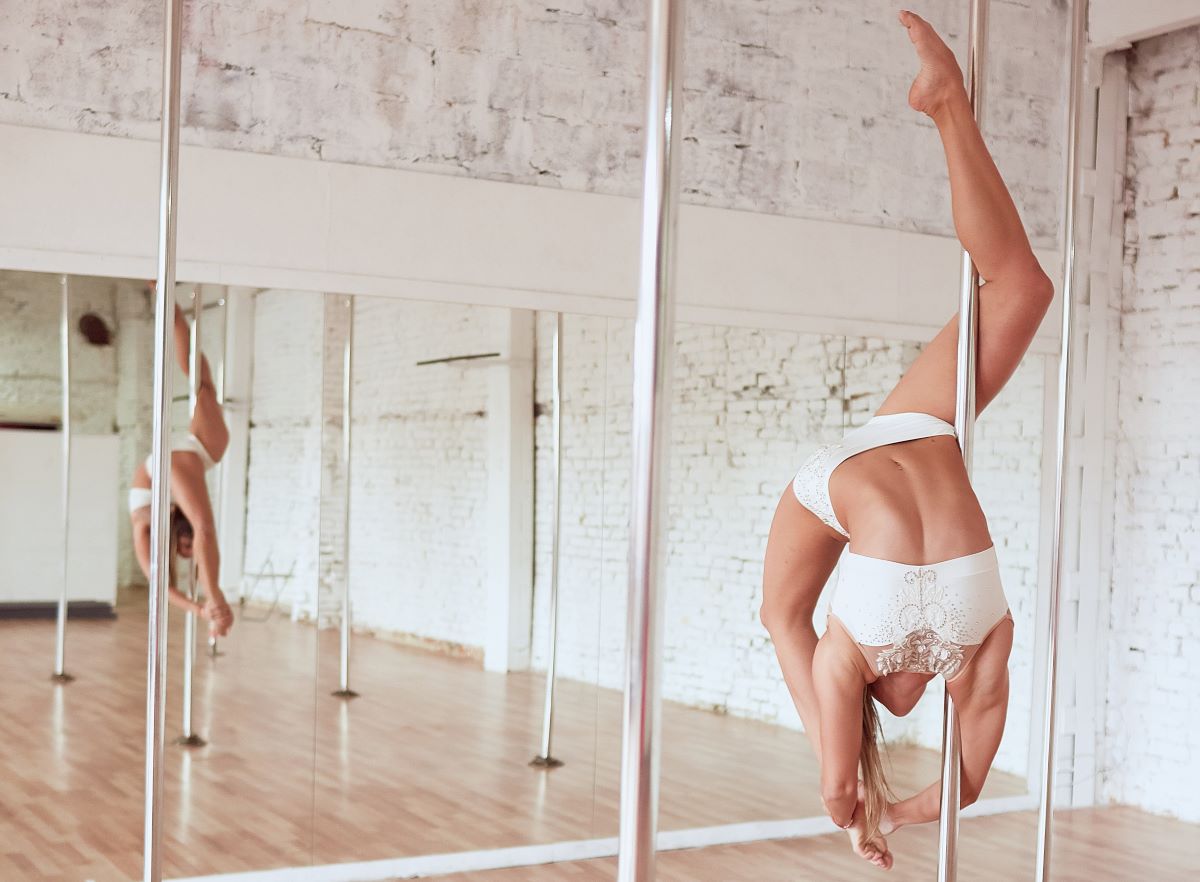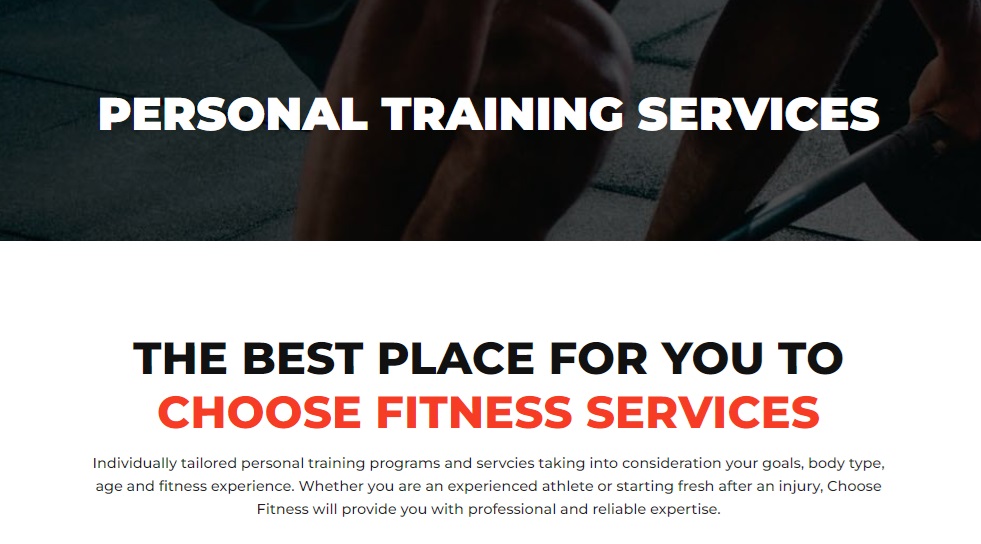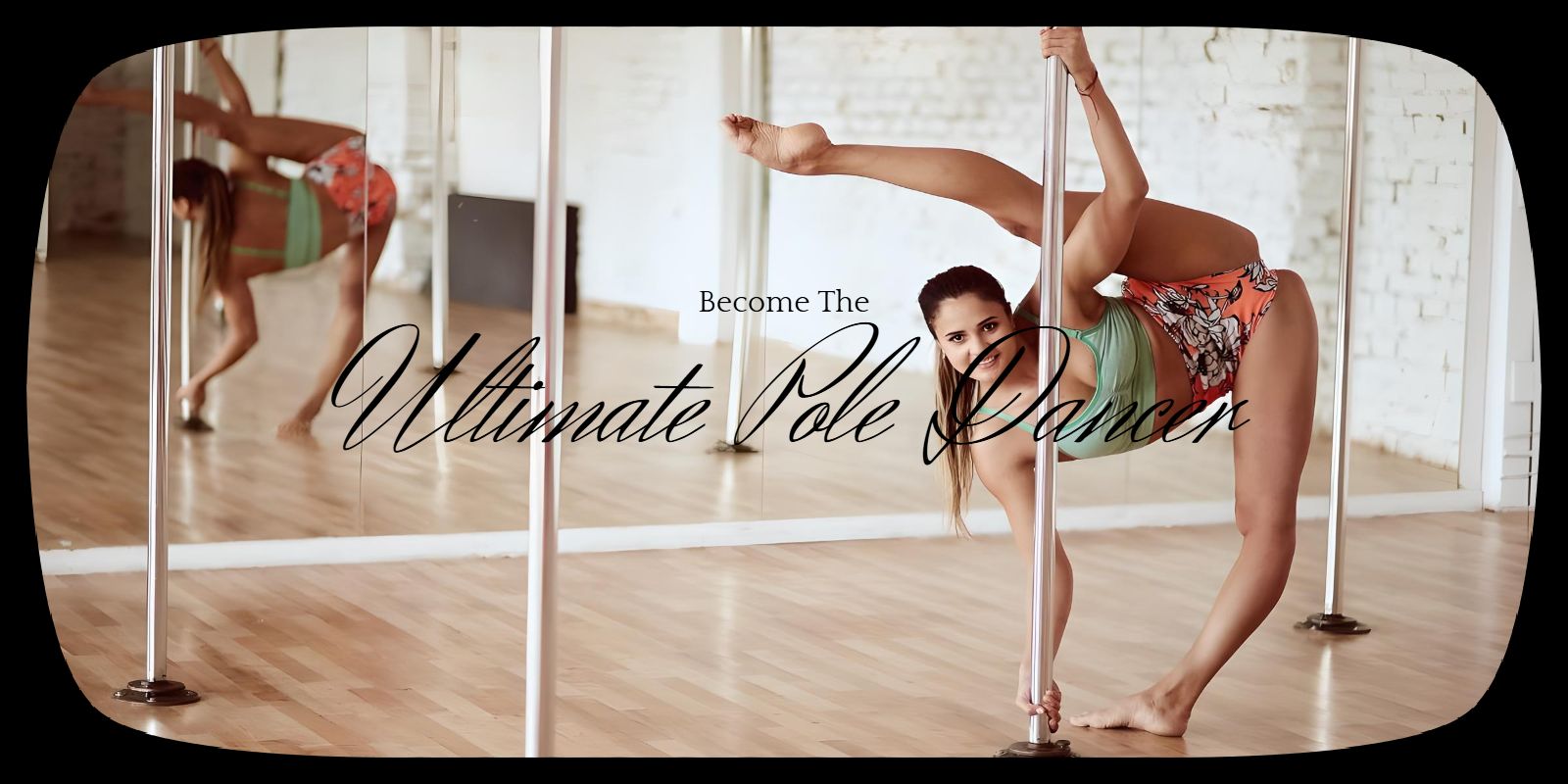Pole Dancing as a Fitness Revolution
Becoming The Ultimate Pole Dancer has come a long way from its origins as a niche art form. Today, it’s not just about spinning around a pole—it’s a recognized and respected fitness regimen that challenges your entire body. Whether you’re looking to build strength, improve flexibility, or boost your endurance, pole dancing offers a full-body workout that can help you achieve your fitness goals.
A Brief History of Pole Dancing
Pole dancing has undergone a fascinating evolution. Once primarily associated with entertainment venues, it has transformed into a celebrated form of fitness and artistic expression. Its roots can be traced back to ancient Chinese and Indian pole sports. Over time, it has developed into a unique blend of athleticism, dance, and creativity that attracts people from all walks of life.
Why Try Pole Dancing for Fitness?
If you’re looking for a workout that does more than just burn calories, pole dancing might be the perfect choice for you. It’s an excellent way to build strength, enhance flexibility, and improve coordination, all while engaging multiple muscle groups at once. But the benefits go beyond the physical—pole dancing can also boost your confidence, promote body positivity, and provide a fun and creative outlet.
Targeting the Right Muscles
To get the most out of your pole dancing workouts, it’s important to know which muscles to focus on. Here’s a breakdown of the key muscle groups that are crucial for pole dancers:
- Core Muscles: Your core is the powerhouse of your body. A strong core helps with stability and control, especially when you’re executing those complex pole moves and trying to maintain balance.
- Abdominal Muscles: These muscles, including the rectus abdominis and transverse abdominis, are essential for stability and control. They play a major role when you’re performing inversions or other advanced maneuvers.
- Obliques: Your obliques are key for twisting and lateral movements. They’re vital for spins and smooth transitions on the pole.
Upper Body Muscles
- Upper body strength is a must in pole dancing. You’ll need it for lifting your body weight and performing those gravity-defying tricks.
- Shoulders: The deltoid muscles in your shoulders are crucial for supporting your weight during climbs and holds.
- Biceps and Triceps: These muscles are indispensable for gripping the pole and performing lifts and inversions. A balanced workout should target both.
Lower Body Muscles
- While core and upper body strength often steal the spotlight, don’t forget about your lower body.
- Thighs and Glutes: Strong thighs and glutes are essential for gripping the pole and executing leg holds. They also give you the power for jumps and flips.
- Calves: Calf strength is key for stability, especially when you’re working on a spinning pole or mastering precise footwork.

20 Of The Most Common Pole Dancing Moves
1. Fireman Spin
- Description: A basic spin where the dancer wraps their legs around the pole as if sliding down a fireman’s pole.
- How to Do: Start by gripping the pole with your inside hand above your head and your outside hand below. As you push off with your outside leg, swing your inside leg around the pole and tuck both knees. Hold the pole between your thighs and slide down.
2. Chair Spin
- Description: A spin that mimics sitting on a chair while rotating around the pole.
- How to Do: Grip the pole with both hands, one above the other. Push off with your outside leg while lifting your inside leg into a seated position. Keep your legs bent at a 90-degree angle as you spin around the pole.
3. Back Hook Spin
- Description: A spin where the dancer hooks one leg around the pole and swings backward.
- How to Do: Start with an inside arm grip and an outside leg kick. Hook your inside leg around the pole and use the momentum to swing your body backward, allowing the outside leg to follow.
4. Front Hook Spin
- Description: A spin where the dancer hooks one leg around the pole and swings forward.
- How to Do: Grip the pole with both hands. Kick your outside leg up and hook it around the pole. Let your body swing forward while bringing your other leg up to complete the spin.
5. Pirouette
- Description: A turn around the pole on the balls of your feet.
- How to Do: Hold the pole with one hand at shoulder height. Step around the pole on the balls of your feet, using your free hand to guide your movement. Complete the turn by bringing your legs together.
6. Sunwheel Spin
- Description: A spin with legs extended out, creating a wheel-like effect.
- How to Do: Grip the pole with your inside hand and push off with your outside leg. As you spin, extend both legs straight out to the side, creating a circular motion around the pole.
7. Crucifix
- Description: A static hold where the dancer grips the pole with their thighs in an inverted position.
- How to Do: Invert your body by bringing your legs up and hooking the pole between your thighs. Squeeze tightly to hold the position, using your core muscles to maintain balance.
8. Climb
- Description: A fundamental move where the dancer climbs up the pole using their arms and legs.
- How to Do: Grip the pole with your hands and wrap one leg around it. Use your upper body strength to pull yourself up while pushing off with your leg. Repeat with the opposite leg to ascend the pole.
9. Gemini (Outside Leg Hang)
- Description: An inverted move where the dancer hangs off the pole with one leg hooked around it.
- How to Do: Invert on the pole and hook your outside leg around it. Lean back, extending your inside leg out while gripping the pole with your inside arm for stability.
10. Scorpio (Inside Leg Hang)
- Description: Similar to the Gemini but with the inside leg hooked around the pole.
- How to Do: Invert on the pole and hook your inside leg around it. Extend your outside leg away from the pole and lean back, using your hands to grip for balance.
11. Superman
- Description: An advanced move where the dancer is inverted with the body extended parallel to the pole.
- How to Do: Start in an inverted position with your legs straddling the pole. Rotate your hips and extend your body so that you’re parallel to the floor, gripping the pole between your thighs and with one hand.
12. Invert
- Description: The act of flipping upside down on the pole, often leading into other moves.
- How to Do: Grip the pole with both hands above your head. Pull yourself up while lifting your legs, using your core to invert your body. Once upside down, hook your legs around the pole for support.
13. Fan Kick
- Description: A kick where the legs fan out and create a sweeping motion around the pole.
- How to Do: Stand beside the pole and grip it with one hand. Kick your inside leg up and out, followed by your outside leg, creating a wide, sweeping motion with your legs.
14. Ayesha
- Description: An advanced move where the dancer is upside down, holding the pole with their hands and legs extended in a V-shape.
- How to Do: Invert on the pole and grip it with your hands. Extend your legs out into a V-shape, using your core and upper body strength to maintain stability.
15. Butterfly
- Description: An inverted move where the dancer splits their legs and leans away from the pole.
- How to Do: Invert on the pole and hook one leg. Bring the other leg away from the pole while leaning back, using your hands to grip for support.
16. Jade Split
- Description: A dramatic split performed while inverted on the pole.
- How to Do: Start in an inverted position. Hook one leg around the pole and extend the other leg out straight. Use your core to balance and lower into a split position.
17. Cupid
- Description: A static move where the dancer holds the pole with one leg and hand, with the body leaning away.
- How to Do: Hook your inside leg around the pole and grip with the inside hand. Lean your body away from the pole and extend your outside leg and arm outward for balance.
18. Brass Monkey
- Description: An inverted move where the dancer’s legs are in a V-shape with the body horizontal to the floor.
- How to Do: Invert on the pole and hook your inside leg. Reach your hands down to grip the pole near your waist. Pull your body up, extending your legs into a V-shape parallel to the floor.
19. Caterpillar Climb
- Description: An advanced climbing move done while inverted, using the upper body and legs to climb.
- How to Do: Invert on the pole and grip with your hands. Tuck your knees and use your core to pull your body up, pushing with your arms to ascend the pole while remaining inverted.
20. Allegra
- Description: A pose where the dancer arches back, holding the pole with one leg and hand while the other leg is extended.
- How to Do: Invert on the pole and hook one leg around it. Lean back and grip the pole with your opposite hand. Extend your free leg out and arch your back to create the shape.
Essential Exercises for Pole Dancers
A well-rounded exercise program for pole dancers should focus on strengthening the core, upper body, and lower body. These exercises enhance strength, stability, and flexibility, crucial for performing various pole moves and preventing injuries.
Core Strengthening Exercises
- Planks
Planks are excellent for building overall core strength. They engage the entire core, including the abs, obliques, and lower back muscles. Hold a plank position by keeping your body in a straight line from head to heels, resting on your forearms and toes. - Russian Twists
Russian twists target the obliques and help improve rotational strength, essential for spinning and transitioning on the pole. Sit on the floor with knees bent, lean back slightly, and twist your torso from side to side while holding a weight or just clasping your hands together. - Hanging Leg Raises
Hanging leg raises strengthen the lower abs and hip flexors. They also improve grip strength, which is vital for pole dancers. Hang from a bar with an overhand grip and lift your legs straight up towards your chest, keeping them together and engaging your core.
Upper Body Strengthening Exercises
- Pull-Ups and Chin-Ups
These exercises are fantastic for building upper body strength, particularly in the shoulders, biceps, and back. They mimic the movements required for climbing and holding poses on the pole. Start by hanging from a bar and pulling yourself up until your chin is above the bar. - Push-Ups and Handstands
Push-ups and handstands are great for building strength in the shoulders, chest, and arms. They also enhance balance and stability. Push-ups can be done on the floor, while handstands can be practiced against a wall for support. - Dumbbell Rows and Lateral Raises
Dumbbell rows and lateral raises target the back and shoulder muscles, helping improve posture and stability during pole routines. Perform rows by bending over and pulling dumbbells up towards your waist. Lateral raises involve lifting dumbbells out to the sides to shoulder height.
Lower Body Strengthening Exercises
- Squats and Lunges
Squats and lunges are essential for building strength in the thighs and glutes. These exercises enhance lower body power and stability, which are crucial for gripping the pole. Squats involve lowering your body by bending your knees, while lunges require stepping forward and lowering your body until both knees are bent at a 90-degree angle. - Deadlifts
Deadlifts strengthen the entire posterior chain, including the glutes, hamstrings, and lower back. They help improve overall body strength and prevent injuries. Stand with feet hip-width apart, bend at the hips and knees to grab a barbell, and lift it by straightening your hips and knees. - Plyometric Exercises
Plyometric exercises, such as jump squats and box jumps, improve explosive power and agility, beneficial for dynamic pole moves. Jump squats involve jumping from a squat position, while box jumps require jumping onto and off a box or platform.
Health Benefits of Pole Dancing
Pole dancing offers numerous health benefits, making it an excellent choice for those looking to improve their fitness levels.
Physical Benefits
Pole dancing provides a full-body workout that enhances strength, flexibility, and cardiovascular endurance. It helps tone muscles, improve posture, and increase overall physical fitness. Regular practice can lead to improved muscle definition, enhanced coordination, and greater flexibility.
Mental Health Benefits
Beyond physical fitness, pole dancing also offers mental health benefits. It can boost self-esteem, reduce stress, and promote a positive body image. The focus required during practice also helps improve concentration and mindfulness, fostering a greater sense of mental well-being.
Social and Emotional Benefits
Pole dancing classes foster a sense of community and camaraderie. The supportive environment encourages personal growth and emotional well-being. It’s a great way to meet new people and build lasting friendships, enhancing both social skills and emotional resilience.
Essential Equipment for Pole Dancing at Home
If you’re looking to practice pole dancing at home, investing in the right equipment is crucial for safety and effectiveness.
Types of Poles
- Static Poles
Static poles are fixed and do not rotate. They are ideal for beginners as they provide more stability and control, making it easier to learn basic moves and build strength. - Spinning Poles
Spinning poles rotate and require more strength and control. They are great for more advanced dancers looking to perform dynamic moves and spins. Spinning poles add an extra challenge by requiring more grip strength and balance.
Grips and Safety Gear
- Grip Aids
Grip aids, such as liquid chalk or grip-enhancing gloves, help improve grip and reduce the risk of slipping. They are especially useful for maintaining a secure hold on the pole during challenging moves. - Mats and Crash Pads
Mats and crash pads provide cushioning in case of falls, making practice safer, especially when learning new tricks. They help prevent injuries by absorbing impact and providing a softer landing surface.
Attire and Accessories
- Pole Wear
Pole wear, such as shorts and sports bras, should be comfortable and allow for maximum skin contact with the pole. This helps with gripping and performing moves safely, as skin contact provides better friction. - Footwear and Grip Socks
While many dancers prefer to practice barefoot, grip socks or specialized pole dance shoes can provide additional grip and protection. They can also help maintain hygiene and prevent slipping during practice.
Incorporating these exercises, understanding the benefits, and using the right equipment can greatly enhance a pole dancer’s performance, safety, and enjoyment of the practice.
The Ultimate Pole Dancer
Finding the Right Pole Dancing Studio and Trainer
Choosing the right studio and trainer is essential for a successful pole dancing journey. Here are some factors to consider when making your selection:
Choosing a Pole Dancing Studio
When selecting a pole dancing studio, it’s important to consider location, instructor qualifications, and the overall atmosphere of the studio.
- Location and Accessibility
Choose a studio that is conveniently located and easy to access. This makes it easier to attend classes regularly, ensuring consistent practice and progress. Consider factors such as parking availability, public transport options, and how close the studio is to your home or work. - Instructor Qualifications
Ensure that the instructors are certified and experienced in teaching pole dancing. Look for instructors with a background in fitness or dance, as they will have a solid understanding of body mechanics and safety. It’s also beneficial if the instructor has experience in teaching various skill levels, from beginners to advanced dancers. - Studio Amenities and Atmosphere
A good studio should have well-maintained equipment, such as poles, mats, and sound systems. The atmosphere should be welcoming and supportive, fostering a sense of community among students. Visit the studio in person to get a feel for the environment, meet the instructors, and observe a class if possible.

Selecting a Personal Trainer for Pole Dancing
A Choose Fitness personal trainer can provide customized guidance to help you achieve your pole dancing goals more effectively.
- Experience with Pole Fitness
Choose a trainer who has experience with pole fitness and understands the unique demands of the sport. A trainer knowledgeable in pole dancing can help you improve your strength, flexibility, and technique in a way that is specific to pole dancing. - Creating a Customized Training Plan
A good trainer will create a personalized training plan tailored to your strengths and weaknesses. This plan should include exercises that complement your pole dancing practice, focusing on building the necessary strength, flexibility, and endurance. Regular assessments and adjustments to your plan will help you progress faster and achieve your goals. - Scheduling and Budget Considerations
Consider the trainer’s availability and fees. Make sure their schedule aligns with yours and that their rates fit within your budget. It’s also important to establish how often you’ll train together and whether you need additional sessions or support outside of your regular training.
Career Opportunities in Pole Dancing
Pole dancing offers various career opportunities for those passionate about the sport. Here are some of the paths you can take:
- Becoming a Professional Pole Dancer
As a professional pole dancer, you can perform at events, competitions, and shows. This role requires dedication, practice, and a high level of skill. Many professional dancers travel internationally for competitions and performances, showcasing their talents on a global stage. - Teaching and Coaching Opportunities
Many experienced pole dancers choose to become instructors, teaching classes at studios or offering private lessons. This is a great way to share your passion and help others learn. Teaching can be highly rewarding, as you guide students through their progress and watch them achieve their goals. - Performing and Entertainment Roles
Pole dancing skills can also be utilized in the entertainment industry, such as in music videos, theater productions, and circus performances. These roles offer exciting opportunities to showcase your talent and creativity in various formats and genres.
Earnings Potential for Professional Pole Dancers
Earnings for professional pole dancers can vary widely based on several factors.
Factors Influencing Earnings
Factors such as skill level, reputation, and the type of gigs you book will influence your earning potential. Dancers who perform regularly at high-profile events or teach at reputable studios tend to earn more. Additional factors include geographical location, demand for pole dancing in the area, and the dancer’s ability to market themselves.
Average Earnings and Growth Potential
On average, professional pole dancers can earn anywhere from $30,000 to $70,000USD per year. With dedication and experience, earnings can increase significantly. Some dancers even make six figures through performances, teaching, and workshops. Building a strong personal brand and expanding your skills into related areas, such as choreography or fitness training, can further boost your earning potential.
Pole dancing is a versatile and rewarding fitness regimen that offers numerous physical, mental, and emotional benefits. Whether you’re looking to improve your fitness, pursue a career in dance, or simply have fun, pole dancing has something to offer. By focusing on the right exercises, finding the right studio, and investing in the right equipment, you can achieve your pole dancing goals and enjoy a fulfilling journey.
FAQs
How long does it take to become proficient in pole dancing?
The time it takes to become proficient varies depending on individual fitness levels, dedication, and training frequency. On average, it can take anywhere from a few months to a couple of years to master basic moves and build the strength needed for more advanced tricks.
Can anyone start pole dancing regardless of fitness level?
Yes, pole dancing is accessible to individuals of all fitness levels. Beginners can start with basic moves and gradually build strength and flexibility over time. It’s important to progress at your own pace and listen to your body.
What are the best ways to prevent injuries while pole dancing?
To prevent injuries, it’s crucial to warm up properly before each session, practice good form, and listen to your body. Using proper grip aids and safety mats can also reduce the risk of falls and slips. Additionally, working with a qualified instructor can help ensure you’re practicing safely.
How can I overcome the fear of pole dancing?
Overcoming fear in pole dancing takes time and practice. Start with simple moves and gradually work your way up to more challenging tricks. Surround yourself with supportive peers and instructors who can encourage and guide you. Remember, everyone starts as a beginner!
What should I look for in a pole dancing class?
Look for a class that offers a welcoming and supportive environment, experienced instructors, and a focus on safety and proper technique. The class should also cater to your skill level and offer a variety of moves and routines to keep things exciting and challenging.
Sibloguser is an erotic writer living in Singapore for over 12 years, crafting bold, sensual stories inspired by real experiences and tropical settings.





Leave a Reply